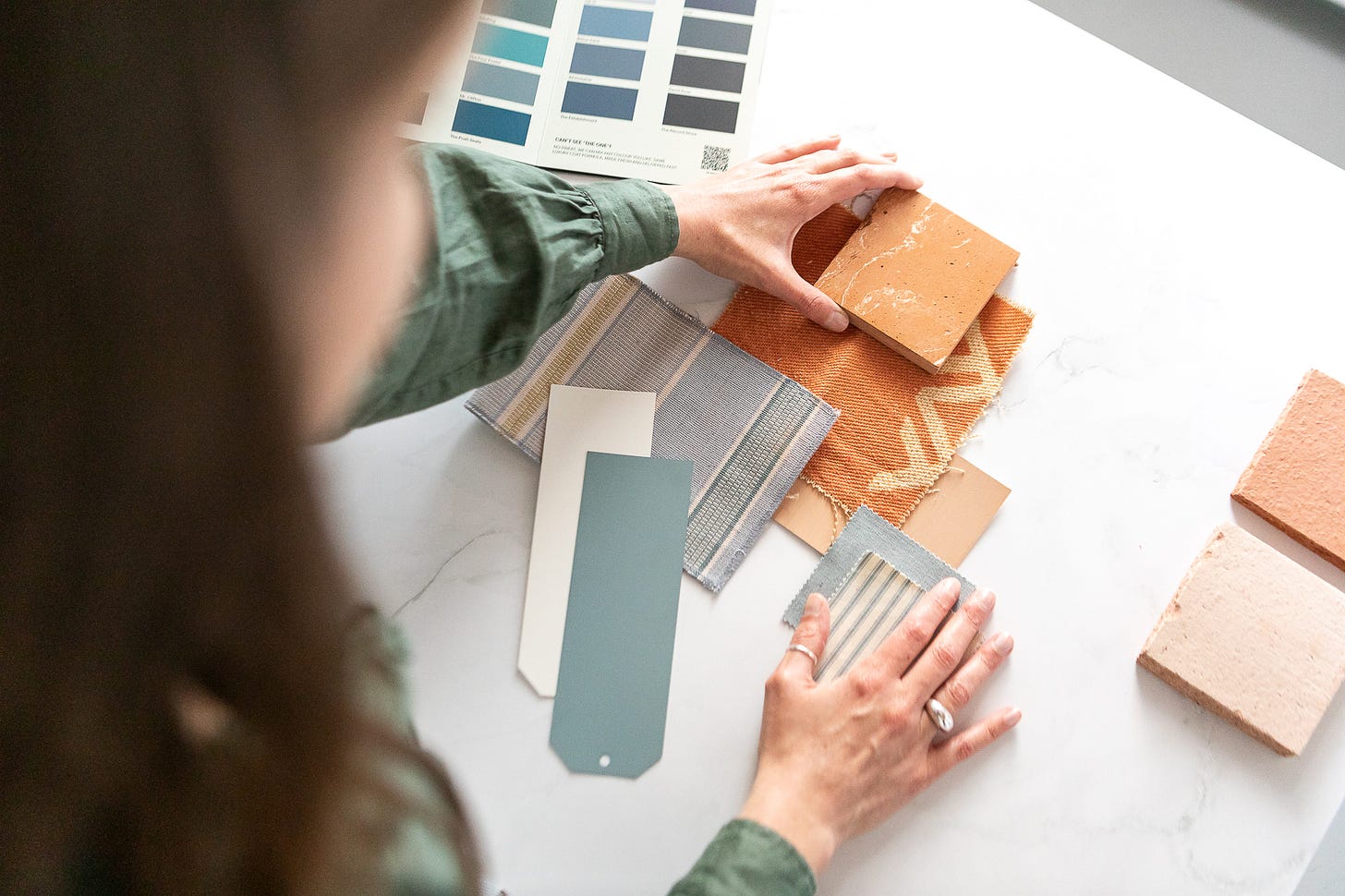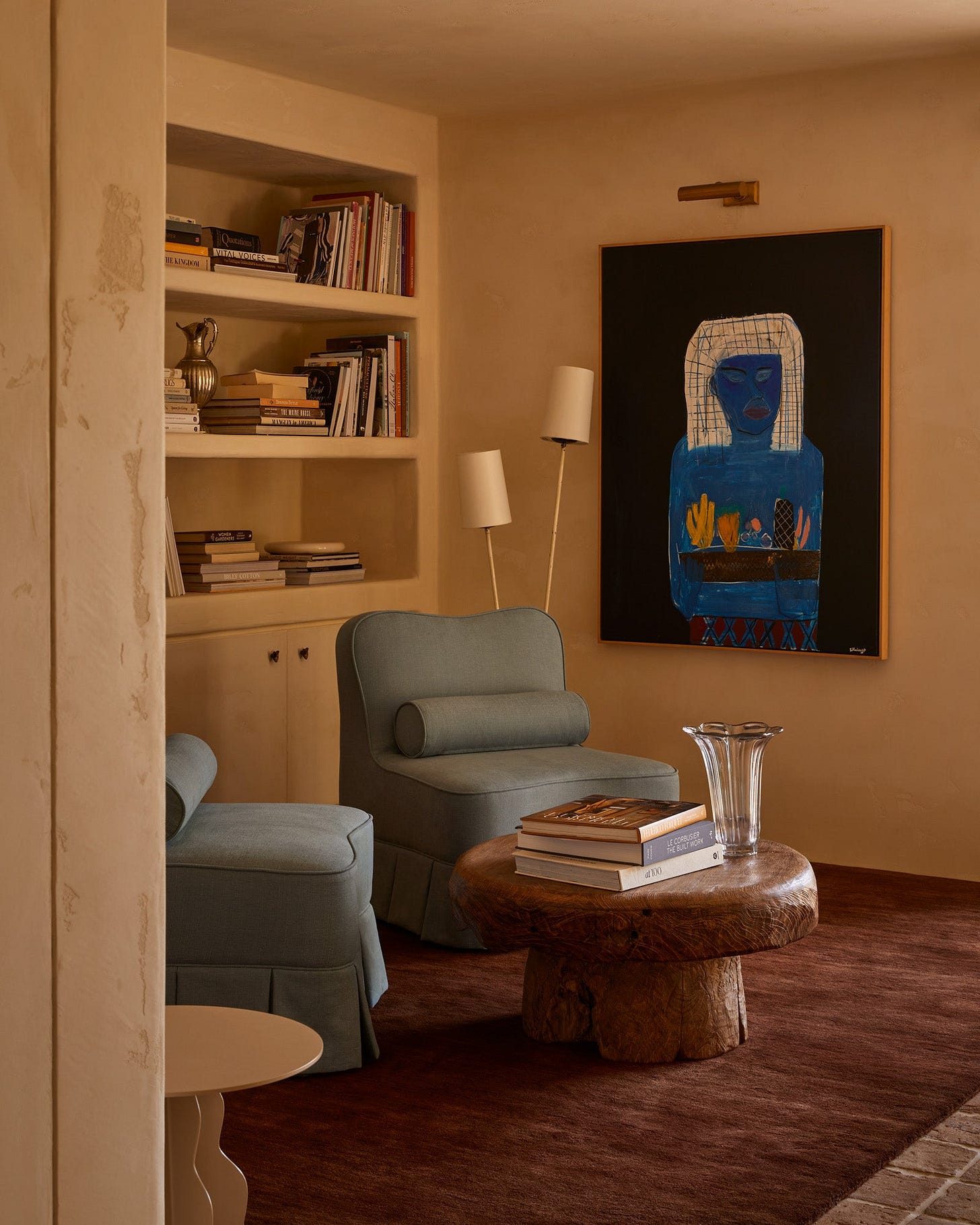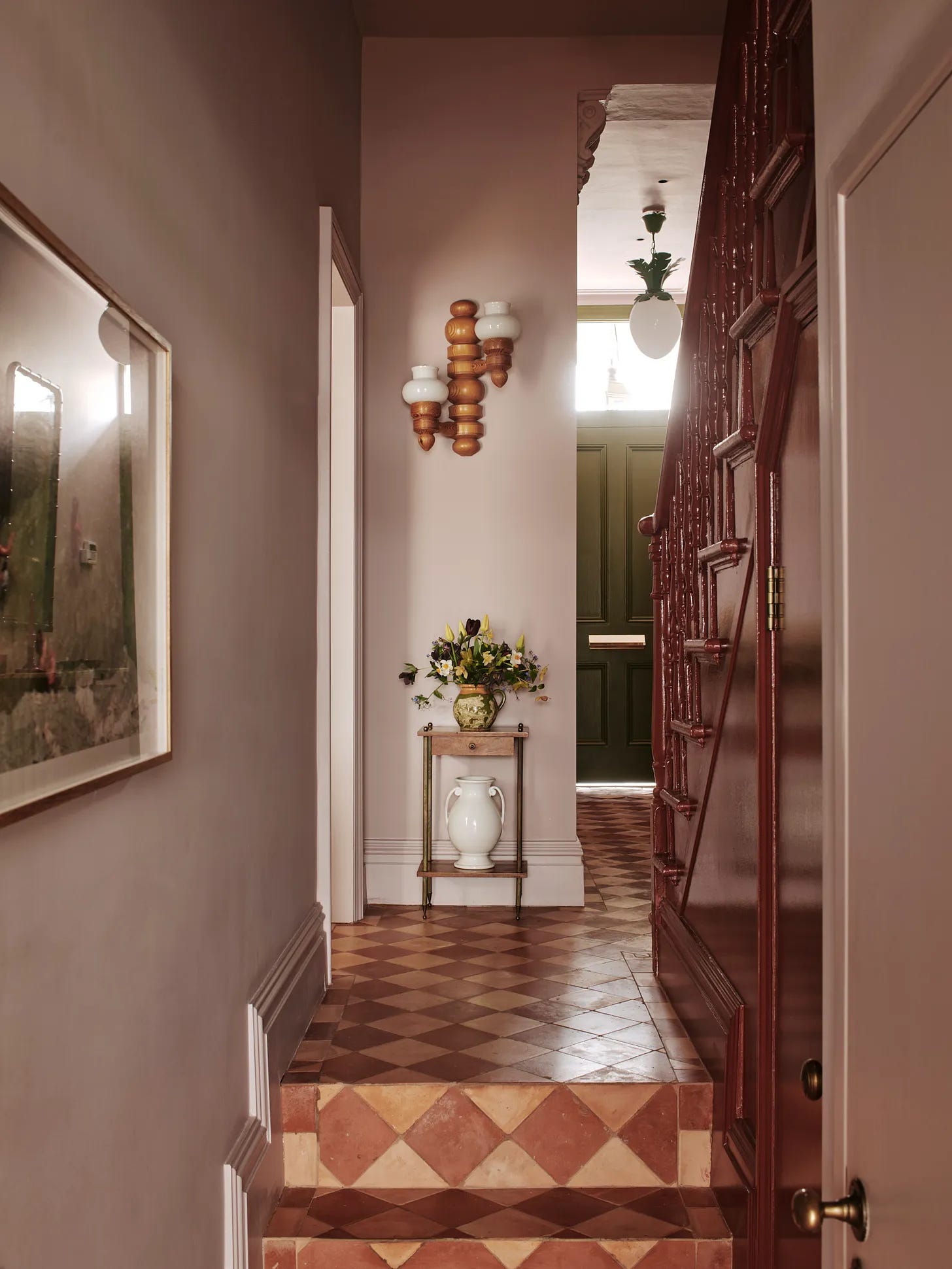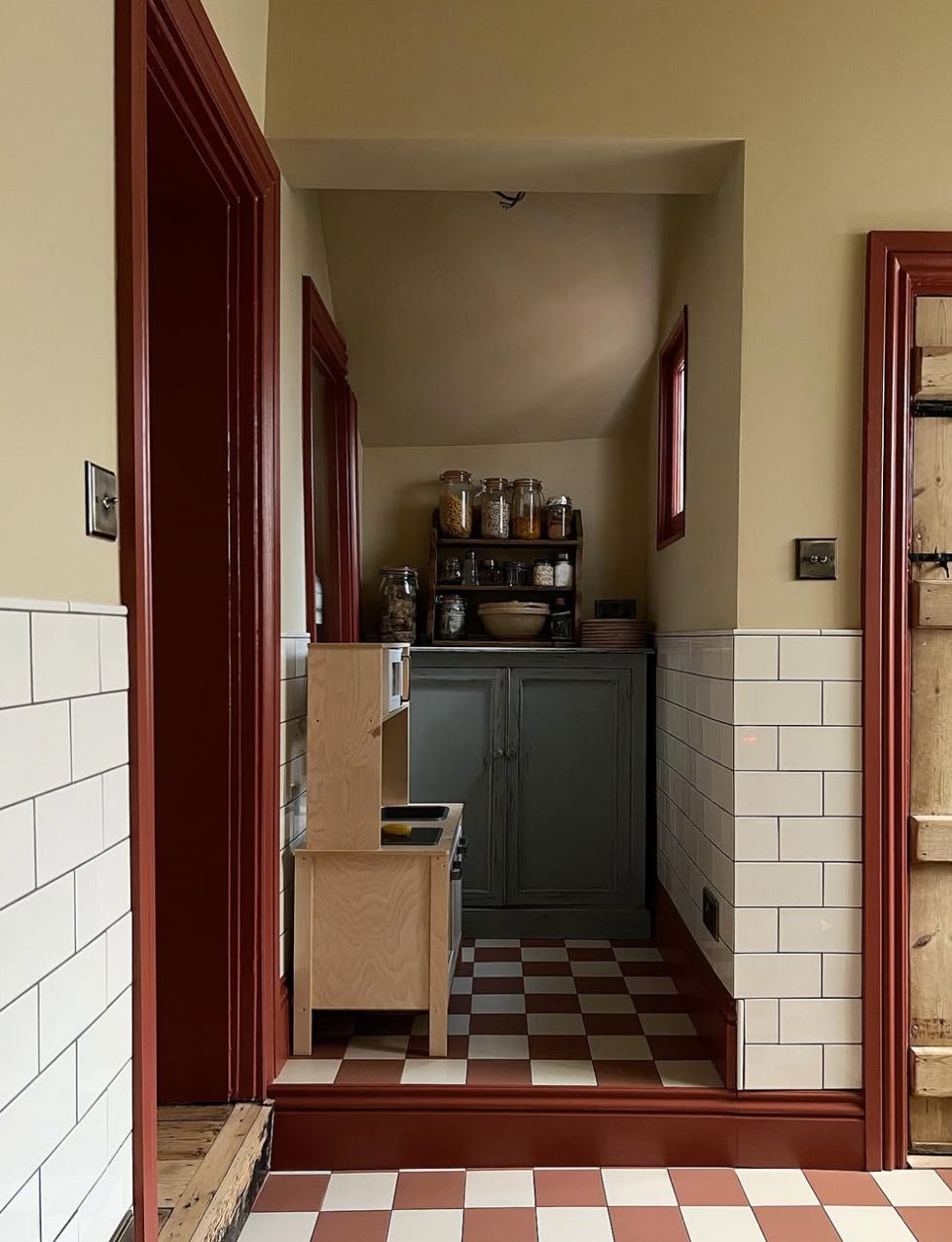The Secret to a Cohesive Colour Scheme in Your Home
How to use different colours in every room and still create a sense of flow
I have just wrapped up a colour consultation with a gorgeous client who I’ve been working with for the last three years. We’ve transformed her entire home, and this year she came to me for a refresh of the hallway, master bedroom and her toddler’s room.
When we got to planning her little boy’s room, we explored colours that would bring in personality and playfulness while still feeling timeless and something that could grow with him. But as we chatted, she hesitated and said, ‘I love the idea of colour in here, but I’m worried it won’t work with the rest of the house…so perhaps we just do the same colour in here as our master bedroom?’
Can I be honest? Although I see this hesitation daily with my clients, my heart dropped. The master bedroom is a soft, understated taupe, which is perfect for my client’s sanctuary space and mid-century furniture but less fun for an adventurous 2-year-old who adores blue and green. This struck me and made me realise 1. how scared we still are of using colour in our home and 2. the common misconception that using different colours in different rooms will make a home feel disjointed. So here I am. Straight off the consultation, diving into a guide just for you on how to create harmony at home, without compromising on colour or style.
One of the easiest ways to achieve a cohesive colour scheme is by introducing a colour story. If you’ve been following me for a while, you know I talk a lot about creating a colour story, but I’ve never really broken it down with actionable steps to bring it into your home. Until now.
What Is a Colour Story?
A colour story is the idea of repeating one colour in every room to create a subtle connection that brings your home together. You might have heard of the ‘red thread’ theory? Well, this is a similar concept, but a colour story goes much deeper.
Don’t worry, this doesn’t mean painting every room in the same colour - it’s about creating a sense of connection by introducing a colour (or finish) into every space, but in different ways.

How to Build a Colour Story
Start with the Colours You’re Naturally Drawn To
No matter whether you're starting from scratch or working with existing decor, start by looking at what you already have. Is there a colour or material that you notice is in every room (or most rooms) of the house? Is there a colour you are constantly drawn to, not just in interiors but in your wardrobe or when you’re out shopping? Do you always gravitate to one colour over another?
We are, in fact, constantly making colour decisions, whether we are aware of it or not. Think about when you meet your friends for coffee, 9 times out of 10, you’ll be choosing the coffee shop, not just for the great coffee but because the interior feels good. You resonate with it; you enjoy spending time in there. We all gravitate to certain colours for different reasons, so try and tune into what it is you love and why.
Play with Tone
Before we dive into tone, I thought it might be handy to define what the word ‘tone’ really means. ‘Tone’ refers to when grey is added to create a variation of a colour. It can also be used to describe the lightness or darkness of a colour. While the ‘colour’ or ‘hue’ is blue, a blue tone could be a light blue, a mid-blue or a dark blue.
To ensure your colour story feels cohesive, aim to use the same colour throughout, using tints and shades (varying tones) of the same hue.

Consider Placement and Proportion
Repeat your colour in different places and proportions in every room, making your connection subtle. So let’s say your colour story is green. Your front door facing into the hallway is painted green; perhaps your downstairs loo is colour-drenched in green paint, and then you have a couple of green accents in the living room, such as a footstool, artwork or even a picture frame.
Your colour story can manifest in anything - rugs, cushions, curtains, tiles, paint, furniture - you name it, you can do it. They might even manifest in undertones. You could have a different wall colour for every room, but they all share the same undertone. For example, a warm, yellow-based pink in the living room, a yellow-based white in the kitchen and a yellow-based green in the hallway will naturally harmonise.
Think of it like little connectors that run throughout your home to pull it all together, without having to use the same wall colour in each space or feel restricted to a single colour palette.

Transitional spaces, such as hallways, landings, and entryways, are also great places to reinforce your colour story without overwhelming the eye. Let’s say you have a navy accent wall in the living room visible from the hallway, echo that navy tone through a vase or piece of art in the hallway to create a connection. What you see when you move from one space to another matters - by thoughtfully repeating key colours or design elements, you can guide the eye from room to room, creating that ever-so-sought-after flow.

Flow isn’t just about colour. It's about creating consistency through textures, materials, lighting, and decor. Your colour story might not even be a colour at all. It could be a type of wood or metal finish, or consistent flooring that guides you from room to room, creating a quiet sense of continuity.
My best advice? Don’t overthink it. This isn’t a rulebook, it’s simply about recognising the colours and finishes you’re naturally drawn to and finding ways to weave them through your home.
So… what’s your colour story?




I find the best way to develop a color scheme is to find a piece of fabric or a painting that you love and then pull colors from it and use those colors in different strengths and tints in different rooms so that the colors flow from room to room but in different intensities.
What a handy guide! I have heard of a colour story before, but only now fully understand what it means.